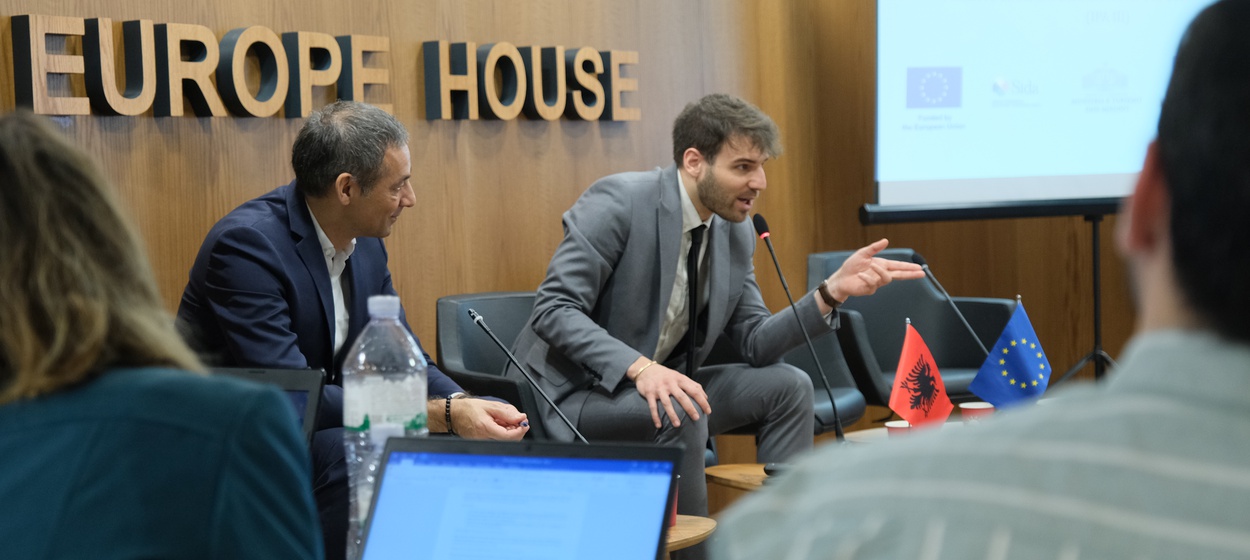News | May 21, 2024
Driving the green transition: insights from the EU4Nature project in Albania


In March 2024, the Practitioners' Network for European Development Cooperation visited Albania to foster European integration and cooperation within the country and the region.
The visit provided an opportunity for Network Members to discuss and present effective examples of joint implementation. The goal was to develop strategies for Working Better Together as part of a Team Europe approach and to enhance and coordinate the technical offer from Team Europe in Albania and the wider Balkans. The focus areas included alignment with the EU acquis, good neighborly relations, the green agenda, sustainable connectivity, and the digital economy and society.
As an example of the green agenda and sustainable connectivity, here is an interview with AICS project managers of the EU4Nature project to learn more about the project's collaborative approach, which demonstrates a concerted effort to align with EU environmental standards and promote sustainable development.
Can you provide an overview of the EU4Nature project you are implementing in Albania?
Building on previous experiences, EU4Nature wants to create an enhanced sense of responsibility among the beneficiaries on environmental protection, management and best practices. The local communities will become aware of the biodiversity and will understand the pivotal role that these areas have for the creation of new income-generating activities and, in the long term, the establishment of better living conditions, while increasing resilience to global warming.
What are the project's main objectives and goals?
The overall objective of the project is to contribute to the protection and conservation of at least 25% of the Albanian territory by 2030 through the establishment and the effective management of a system of Protected Areas (PA).
The goals of the project are:
- The relevant institutions have strengthened their capacities to effectively manage Protected Areas (PAs) according to the EU acquis and best practices.
- The relevant institutions have management plans and performance monitoring systems revised or in place for protected areas through the assessment of biodiversity values and threats.
- The relevant institutions are empowered to implement the management plans, which include conservation and restoration measures, and the sustainable use of forest and non-timber forest products.
- The civil society organisations for environmental protection and restoration of protected areas are strengthened.
- The relevant institutions implement nature-based solutions, focusing but not limited to nature protection/conservation and fighting environmental crimes.
How many European Development Cooperation organisations are participating in the project?
The project will be jointly implemented by UNDP and AICS, as co-implementer. Sida is co-financing the Action.
What is the added value brought by each organisation participating in the EU4Nature project?
All organisation are deeply committed in the environmental sector and are stable and trusted partners of the local institutions at all levels. Particularly, AICS in its strategic plan of action considers Nature protection and Environment as a key pillar.
For this project, AICS is leveraging its longstanding collaboration with Italian sectoral excellencies in environmental research and management of protected areas. Furthermore, AICS is skilled in designing and implementing grant schemes to enable local CSOs in realizing activities for the protection and safeguarding of endangered ecosystems.
How does the project collaborate with other organisations or stakeholders involved in development activities in Albania?
The project is involving all main actors of the environmental sector at institutional level, such as the Ministry of Tourism and Environment, its decentralized offices, the National Agency of Protected Areas, and Albanian and international organisations of the civil society. In addition, during dissemination of results and other visibility activities, a broader spectrum of institutions and organisations will be involved in order to disseminate best practices and create cross-sectoral synergies.
How does the project contribute to broader development goals or priorities in Albania?
The project is designed to protect the environment and enhance its management but will also create new jobs, especially for youths, improving their livelihoods and reducing migration from rural to urban areas. Thus it contributes to the achievement of the SDGs of the 2030 Agenda and aligns seamlessly with the priorities of the national sectoral strategy.
Could you share any lessons learned or best practices from the joint implementation of the EU4Nature project?
Currently the project is still in an initial phase. There have been significant efforts among the participant to find a common ground in terms of modalities, roles in the project operations, coordination in order to guarantee a smooth implementation.
How does the project align with the priorities of the Practitioners' Network for European Development Cooperation?
It aligns with the concept of the Team Europe Initiative; EU4Nature brings together three important actors in Albania, like AICS, SIDA and UNDP active in the field of environment protection. This represents a great opportunity to engage our organisations in joint initiatives in the framework of EU-funded initiatives, thus avoiding duplication and overlapping, and enhancing the Action's efficiency and effectiveness.
More information about EU4Nature project can be found here.
Share: